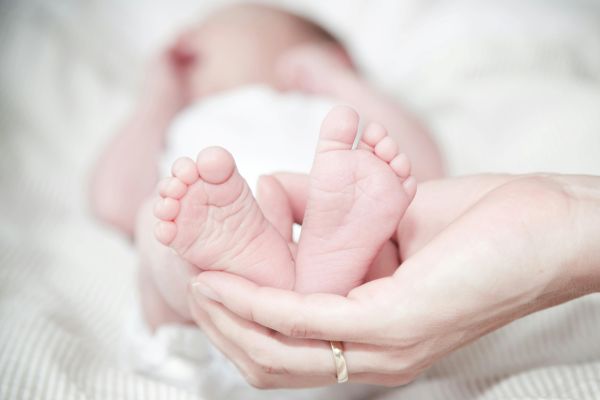Will all children be born free of HIV, syphilis & Hepatitis-B by 2030?

Shobha Shukla & Bobby Ramakant/CNS
Despite knowing how to prevent vertical transmission (from mother to the baby) of HIV, syphilis and Hepatitis-B infections, we are failing with every child who is born with either of these preventable infections.
We have the science-backed tools to ensure that all children are born free of these three infections. Failing to deploy them with utmost effectiveness is highly unacceptable.
All governments have committed to achieving the 17 United Nations Sustainable Development Goals (SDGs) and their 169 targets. The promise to end AIDS, viral hepatitis and other communicable diseases, such as syphilis, is part of the SDGs too.
Strong evidence for years has repeatedly proven that it is possible to ensure that all children born to parent(s) with HIV, Hepatitis-B or syphilis can be born free of these three infections.
No excuse for inaction
To spur progress towards ensuring that all children are born free of these 3 infections, UNICEF, WHO and UNAIDS have recently launched a road map for the triple elimination of mother-to-child transmission of HIV, syphilis and Hepatitis-B in Asia and the Pacific region for 2024–2030.
The road map builds on the existing WHO Regional Framework for the Triple Elimination of Mother-to-Child Transmission of HIV, Hepatitis-B and Syphilis in Asia and the Pacific 2018–2030.
Earlier, the WHO Global Strategy for Women’s, Children’s and Adolescents’ Health (2016–2030) had set an ambitious goal of ending all preventable maternal, newborn, and child deaths, including stillbirths, by 2030.
Similarly, in 2022, the World Health Assembly endorsed the three interlinked ‘Global health sector Strategies on HIV, viral hepatitis, and sexually transmitted infections for 2022–2030’ to eliminate vertical transmission of HIV, syphilis, and Hepatitis-B viruses.
Importance of ensuring children’s safety
According to WHO and the latest road map, all three infections of HIV, syphilis and Hepatitis-B, can be transmitted from women to their newborns during pregnancy and childbirth. In addition, HIV can also be transmitted during breastfeeding.
These infections can lead to adverse pregnancy outcomes and potential long-term consequences for both mother and child. Without science-based interventions, vertical transmission rate for HIV can be up to 45%, leading to high morbidity and mortality among HIV-exposed infants.
Similarly, 70% to 90% of infants born to women positive for Hepatitis-B infection may become chronically infected with hepatitis B if not vaccinated and treated.
Syphilis during pregnancy can result in congenital anomalies, a high risk of stillbirth, premature births, low birth weight and early infant deaths.
68 months left to meet the target
With just less than six years left to meet the targets, governments need to invest more in robust policies and tailored programmes to meet these goals of ensuring every child is born free of HIV, Hepatitis-B and syphilis. These include:
- Antenatal screening for HIV, syphilis and Hepatitis-B for women and their male partners.
- Treatment and care services for women and their male partners with HIV, Hepatitis-B and syphilis.
- Safe delivery and infant feeding options.
- Hepatitis-B vaccination and immunoglobulins, and HIV prophylaxis for children and adolescents.
Likewise, ensuring close collaborations and integration within and across reproductive, maternal, newborn, child, and adolescent health services and immunisation and disease-specific programmes is crucial. This will help improve the accessibility of health services for women, children, and their families, leading to better outcomes, more efficient resource use, and sustainable mechanisms.
Asia-Pacific is home to 9% of children with HIV globally
According to the latest data of UNAIDS, globally, 1.4 million children were living with HIV (aged between 0-14 years) in 2023. Let us all remind ourselves that medicines like zidovudine were first used in rich nations over 30 years ago (in 1994) to reduce HIV risk of the unborn child of HIV positive parent(s).
Today, we have far more effective treatment regimens available to ensure children are born free of HIV, and both the mother and the child live healthy and normal lives.
In the Asia-Pacific region, there are 120,000 children (aged between 0-14 years) who are living with HIV. Indonesia comprises 26% of the regional total of new HIV infections among children, followed by India (23%) and Papua New Guinea (8%).
Since 2010, new HIV infections among children have declined by 62% in the Asia-Pacific region — from 300,000 in 2010 to 120,000 in 2023. Although progress in reducing new HIV infections is greatest among children, progress has stalled in recent years, said Eamonn Murphy, UNAIDS Director for Asia Pacific and Central Asia and Eastern European regions.
Vaccine-preventable Hepatitis-B rings alarm bells
According to a 2023 WHO report, two-thirds of undiagnosed and untreated Hepatitis B-infected population lives in the Western Pacific and South-East Asia region of the WHO.
Vaccination for Hepatitis-B is considered effective in preventing infection and the chronic consequences of the diseases, such as cirrhosis and liver cancer.
The prevalence of chronic Hepatitis-B among the general population in the Western Pacific region is one of the highest in the world. In 2019, an estimated 5.92% of the adult population in this region was infected with Hepatitis-B — 116 million people chronically infected — with 470,000 deaths. In the South-East Asia region, there were 260,000 Hepatitis-B cases in 2019, with 180,000 deaths.
Deadly economic divide
In most high- and upper-middle-income Asia-Pacific countries, almost all children aged one year had received the recommended hepatitis-B vaccination in 2021, meeting the WHO minimum threshold of 95% to avoid vaccine-preventable disease outbreaks.
In contrast, the average vaccination rate for vaccine-preventable diseases in lower-middle and low-income Asia-Pacific countries was around 75%, which is insufficient to ensure the interruption of disease transmission and protection of the population.
Community engagement
Feminist movements and HIV response historically have shown the defining roles communities play in shaping people-centred and rights-based responses.
But community engagement is missing or suboptimal in the private sector, says Pooja Mishra of National Coalition of People Living with HIV in India (NCPI Plus).
Communities can help spur demand generation for the services related to Triple-H (HIV, Hepatitis-B and Hepatitis-C virus). Pooja complemented that public services related to the prevention of vertical transmission of HIV are good in some places. NCPI Plus and partners continue to advocate for improving people-centred services.
All countries in the Asia-Pacific region and globally must ensure that no child is born with any of the three preventable infections. It is high time to prioritise people’s health and well-being and walk the talk to deliver on promises and human rights.
(Shobha Shukla and Bobby Ramakant co-lead the editorial at Citizen News Service and are on the governing board of award-winning Global Antimicrobial Resistance Media Alliance and Asia Pacific Media Alliance for Health and Development)
Banner image by Rene Terp: https://www.pexels.com/photo/close-up-of-hands-holding-baby-feet-325690/





